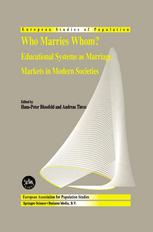

Most ebook files are in PDF format, so you can easily read them using various software such as Foxit Reader or directly on the Google Chrome browser.
Some ebook files are released by publishers in other formats such as .awz, .mobi, .epub, .fb2, etc. You may need to install specific software to read these formats on mobile/PC, such as Calibre.
Please read the tutorial at this link: https://ebookbell.com/faq
We offer FREE conversion to the popular formats you request; however, this may take some time. Therefore, right after payment, please email us, and we will try to provide the service as quickly as possible.
For some exceptional file formats or broken links (if any), please refrain from opening any disputes. Instead, email us first, and we will try to assist within a maximum of 6 hours.
EbookBell Team

4.0
96 reviewsMarriage and social inequality are closely interrelated. Marriage is dependent on the structure of marriage markets, and marriage patterns have consequences for social inequality. This book demonstrates that in most modern societies the educa tional system has become an increasingly important marriage market, particularly for those who are highly qualified. Educational expansion in general and the rising educational participation of women in particular unintentionally have increased the rate of "assortative meeting" and assortative mating across birth cohorts. Rising educational homogamy means that social inequality is further enhanced through marriage because better (and worse) educated single men and women pool their economic and sociocultural advantages (and disadvantages) within couples. In this book we study the changing role of the educational system as a marriage market in modern societies from a cross-national comparative perspective. Using life-history data from a broad range of industrialized countries and longitudinal statistical models, we analyze the process of spouse selection in the life courses of single men and women, step by step. The countries included in this book vary widely in important characteristics such as demographic behavior and institutional characteristics. The life course approach explicitly recognizes the dynamic nature of partner decisions, the importance of educational roles and institutional circum stances as young men and women move through their life paths, and the cumulation of advantages and disadvantages experienced by individuals.